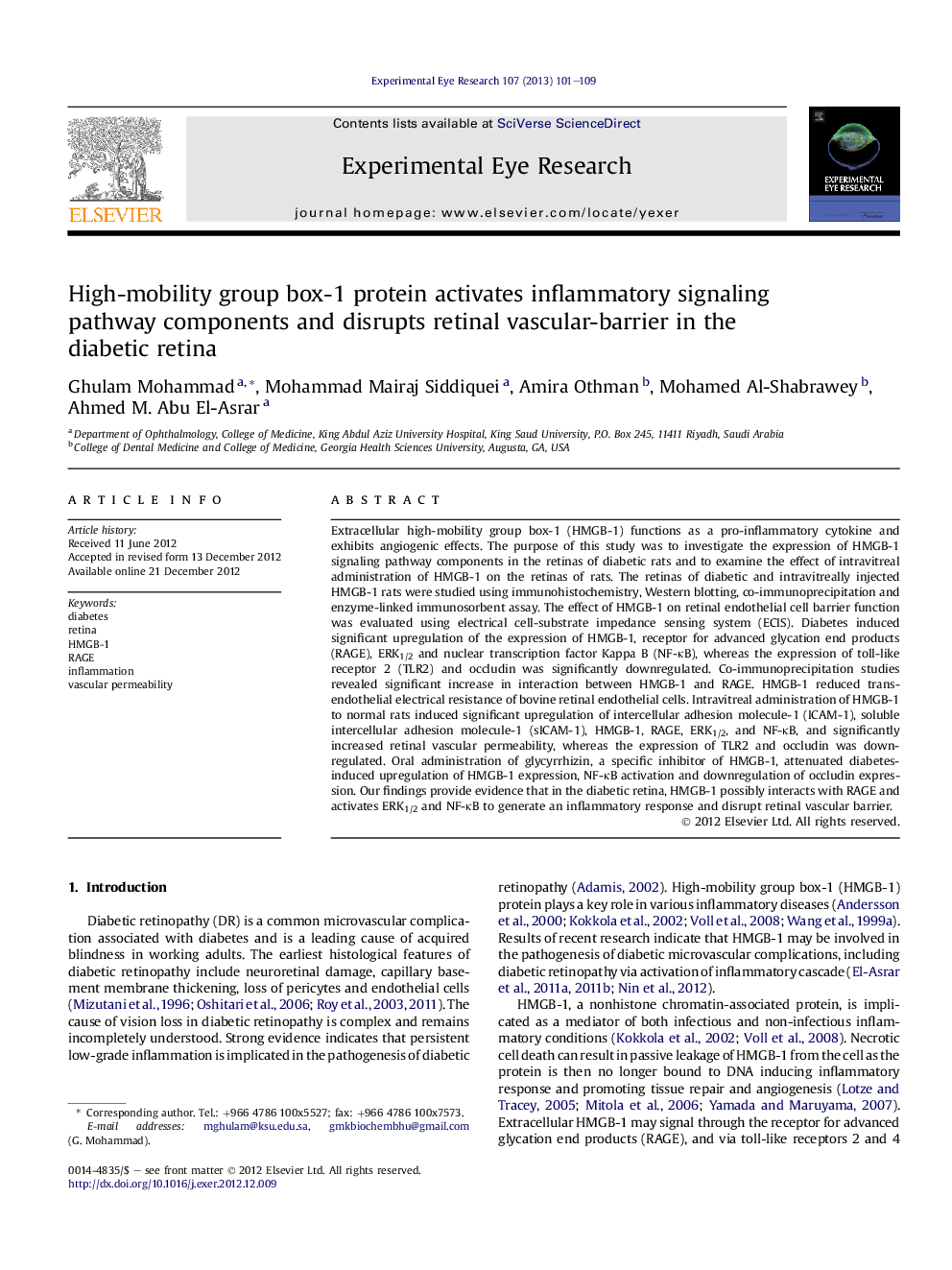| Article ID | Journal | Published Year | Pages | File Type |
|---|---|---|---|---|
| 6197329 | Experimental Eye Research | 2013 | 9 Pages |
Extracellular high-mobility group box-1 (HMGB-1) functions as a pro-inflammatory cytokine and exhibits angiogenic effects. The purpose of this study was to investigate the expression of HMGB-1 signaling pathway components in the retinas of diabetic rats and to examine the effect of intravitreal administration of HMGB-1 on the retinas of rats. The retinas of diabetic and intravitreally injected HMGB-1 rats were studied using immunohistochemistry, Western blotting, co-immunoprecipitation and enzyme-linked immunosorbent assay. The effect of HMGB-1 on retinal endothelial cell barrier function was evaluated using electrical cell-substrate impedance sensing system (ECIS). Diabetes induced significant upregulation of the expression of HMGB-1, receptor for advanced glycation end products (RAGE), ERK1/2 and nuclear transcription factor Kappa B (NF-κB), whereas the expression of toll-like receptor 2 (TLR2) and occludin was significantly downregulated. Co-immunoprecipitation studies revealed significant increase in interaction between HMGB-1 and RAGE. HMGB-1 reduced transendothelial electrical resistance of bovine retinal endothelial cells. Intravitreal administration of HMGB-1 to normal rats induced significant upregulation of intercellular adhesion molecule-1 (ICAM-1), soluble intercellular adhesion molecule-1 (sICAM-1), HMGB-1, RAGE, ERK1/2, and NF-κB, and significantly increased retinal vascular permeability, whereas the expression of TLR2 and occludin was downregulated. Oral administration of glycyrrhizin, a specific inhibitor of HMGB-1, attenuated diabetes-induced upregulation of HMGB-1 expression, NF-κB activation and downregulation of occludin expression. Our findings provide evidence that in the diabetic retina, HMGB-1 possibly interacts with RAGE and activates ERK1/2 and NF-κB to generate an inflammatory response and disrupt retinal vascular barrier.
⺠Extracellular high-mobility group box-1 (HMGB-1) functions as a pro-inflammatory cytokine and exhibits angiogenic effects. ⺠HMGB-1 signaling pathway components are upregulated in the diabetic retina. ⺠HMGB-1 induces upregulation of intercellular adhesion molecule-1 in the retina. âºÂ HMGB-1 induces blood-retinal barrier breakdown in vitro and in vivo.
